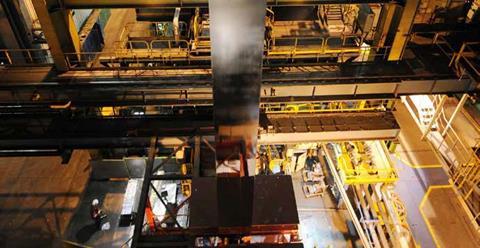A new report from ArcelorMittal has identified the benefits in performance and cost that steel can bring to the EV production challenge
It is no secret that carmakers are intensifying their efforts to develop mass-market electric vehicles (EVs). Although sales of EVs are still a long way behind conventional ICE vehicles, there are expectations that they will make up a quarter of all new car sales by 2025 and be on their way to becoming mainstream. For this transition to be fully successful, carmakers must increase their efforts to extend range, reduce cost and enhance safety.
Now, a new S-in motion study from ArcelorMittal proves that steel remains the best choice to achieve this revolution in mobility at an affordable cost.
EVs have some significant advantages over cars powered by an internal combustion engine (ICE) as Greg Ludkovsky, vice-president of ArcelorMittal Global R&D, explains: “They have nearly 90% fewer rotating parts than ICE vehicles, meaning less wear and tear on the car and a lifespan of almost 1m kilometres or 600,000 miles. Regular maintenance is significantly lower as they require no oil changes or tune-ups. As a result, operating costs per kilometre or per mile are significantly lower.”
Battery pack structure and weight critical for BEVs
Battery electric vehicles (BEVs) are equipped with large batteries to ensure the vehicle driving range expected by consumers. For OEMs, key concerns are the financial costs of EVs that could limit how quickly sales will take off. Another challenge for EV-makers has been the weight of the battery and the extra reinforcement needed to protect it during a crash event – this can add up to 500kg.
ArcelorMittal’s most recent S-in motion BEV study shows that advanced high-strength steels (AHSS) can answer many of these concerns. The study examined the battery pack, which houses the battery cells and their equipment; the chassis; and the body-in-white (BIW).
The battery pack is one of the most vital parts of an EV. As well as protecting the battery and its equipment from external elements, it must keep the vehicle and its passengers safe from battery leakage, fumes, fire, and electromagnetic fields.
The S-in motion examination of the battery pack demonstrated this by simulating some of the most severe load cases, such as underfloor intrusion, pole crush and drop tests. The high mechanical properties of ArcelorMittal’s MartINsite 1500 steel grade exhibited excellent results in these tests when combined with an appropriate design.
The MartINsite grade was able to resist high load-deformation due to its very high yield strength of more than 1200 MPa. The three main sub-modules (upper cross member, frame and lower shield) were found to benefit from this steel grade.
Battery packs
The S-in motion Battery Pack study includes several best-in-class and customisable battery pack solutions. Each showcases the ability of AHSS to meet structural requirements while providing attractive weight and cost benefits. The overall weight of the lightest battery pack concept is 107kg on the basis of a C-segment vehicle. With 60kWh energy, the car has a driving range of 460km with current energy densities available on the market.
When the battery and equipment are included, the overall weight of the battery pack is 427kg. This all-steel solution can match the weight of a battery pack already on the road and provide a comparable level of energy, but at a much lower cost.
The ArcelorMittal battery pack design is modular. It has been easily adapted to a SUV vehicle architecture within the S-in motion BEV full vehicle project.
Steel with a difference
For years, ArcelorMittal has been regarded as a leading provider of high-quality electrical steel for use in a wide variety of applications, including the electric motor, offering increased motor efficiency, speed and torque. S-in motion solutions for the body-in-white and chassis The body-in-white and chassis of a BEV are significantly different to those in an ICE or hybrid powertrain vehicle. The ArcelorMittal solutions dedicated to BIW underbody hoist and secure the large battery pack and new electric motors required. AHSS offers OEMs the most efficient BIW and chassis weight and performance at the most affordable cost. The adaptations take into account constraints such as the extra space for the occupants and the vehicle height in line with the new design trends. ArcelorMittal’s automotive steel grades and solutions continue to ensure carmakers develop BEVs which can meet global crash requirements and are as safe as the best-in-class ICE vehicles on the road today. Moreover, they limit the mass penalty of the BIW despite the electric powertrain weight increase.
www.automotive.arcelormittal.com


































